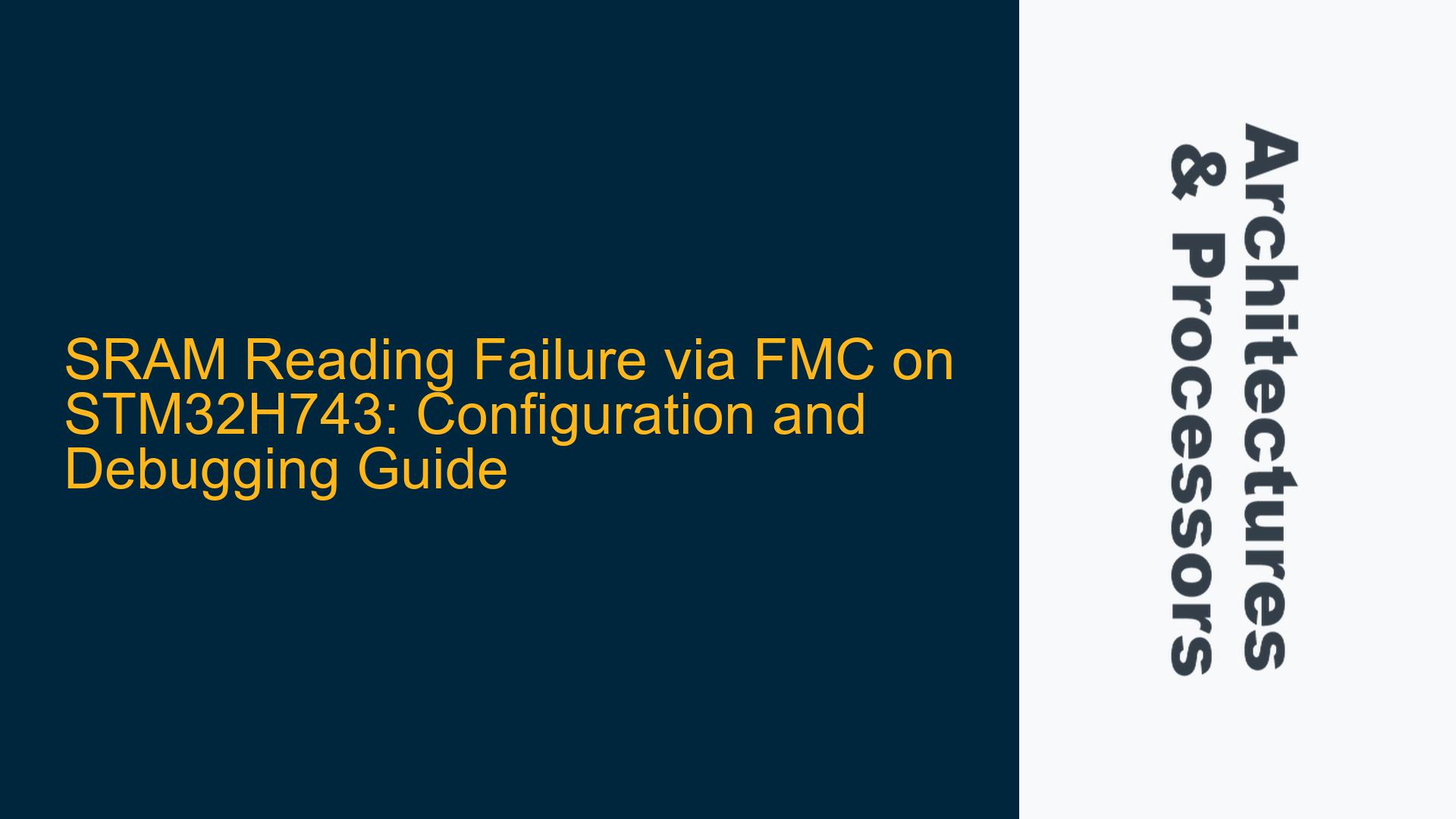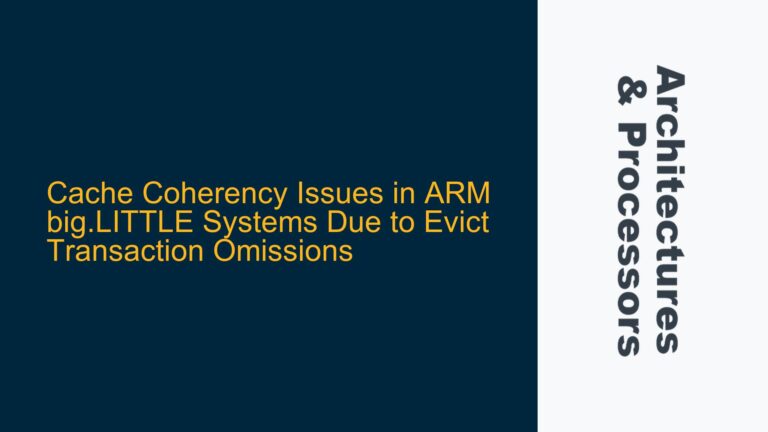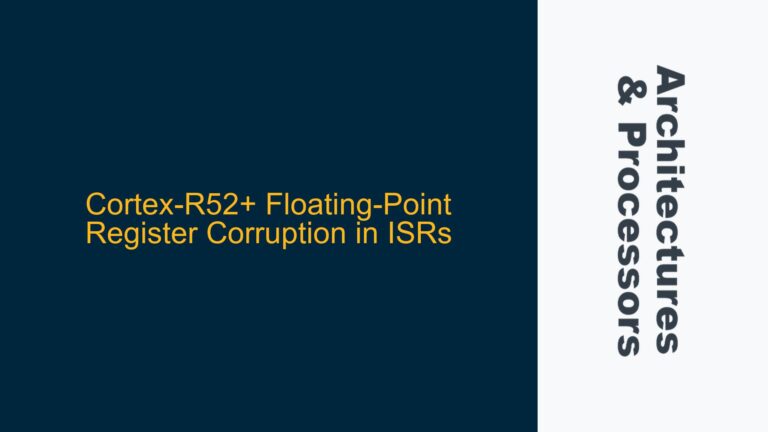FMC Interface Initialization and SRAM Access Issues on STM32H743
The STM32H743 microcontroller features a Flexible Memory Controller (FMC) that enables interfacing with external memory devices such as SRAM, SDRAM, and NOR Flash. However, users often encounter issues when attempting to read from external SRAM using the FMC interface. A common symptom is that the FMC signals remain idle high, indicating no activity on the bus, despite proper configuration and initialization routines. This issue can stem from misconfigurations in the FMC settings, improper clocking, or incorrect memory mapping. Below, we delve into the root causes and provide a comprehensive troubleshooting guide to resolve SRAM reading failures on the STM32H743.
Misconfigured FMC Timing Parameters and Clock Settings
One of the primary causes of SRAM reading failures via the FMC interface is improper configuration of timing parameters and clock settings. The FMC is highly configurable, allowing users to define setup, hold, and wait states for different memory types. However, incorrect values for these parameters can prevent the FMC from generating the necessary signals to access the SRAM. Additionally, the STM32H743 relies on specific clock configurations to drive the FMC peripheral. If the clock tree is not properly initialized, the FMC may remain inactive.
The FMC timing parameters are defined in the FMC_Bank1 register set, which includes settings for address setup time, data setup time, and bus turnaround time. These parameters must align with the timing requirements of the connected SRAM device. For example, if the SRAM requires a minimum address setup time of 10 ns, but the FMC is configured with a shorter setup time, the SRAM will not respond correctly. Similarly, the HCLK (AHB bus clock) must be configured to provide the necessary clock frequency for the FMC. If the HCLK is too low, the FMC may not operate within the SRAM’s timing constraints.
Another critical aspect is the FMC clock enable bit in the RCC (Reset and Clock Control) register. If this bit is not set, the FMC peripheral will not receive a clock signal, rendering it inactive. This oversight is common when using STM32CubeMX, as the tool may not automatically enable the FMC clock depending on the selected configuration.
Addressing Memory Mapping and SRAM Initialization
The STM32H743 uses a memory-mapped I/O scheme to access external devices via the FMC. The FMC assigns a base address to each memory bank, and the SRAM must be accessed within this address range. If the memory mapping is incorrect, the processor will not generate the appropriate signals to read from the SRAM. For example, if the SRAM is connected to FMC Bank 1, it should be accessed using addresses in the range 0x60000000 to 0x6FFFFFFF. Attempting to access the SRAM outside this range will result in no activity on the FMC pins.
Additionally, the SRAM device itself must be properly initialized before it can be accessed. Some SRAM devices require a specific sequence of commands to enable their output buffers or configure their internal timing. If the initialization sequence is not executed, the SRAM will not respond to read or write operations. This is particularly relevant for asynchronous SRAM devices, which may have additional control signals such as chip enable (CE), output enable (OE), and write enable (WE). These signals must be asserted in the correct order and timing to ensure proper operation.
The HAL_SRAM_Read_8b function provided by STM32CubeMX is a convenient way to read data from the SRAM, but it assumes that the FMC and SRAM have been properly configured. If the FMC timing parameters or memory mapping are incorrect, this function will not generate the expected signals on the FMC pins. Furthermore, the function relies on the underlying HAL (Hardware Abstraction Layer) drivers, which must be correctly initialized to interact with the FMC peripheral.
Debugging and Resolving FMC and SRAM Configuration Issues
To diagnose and resolve SRAM reading failures on the STM32H743, follow these steps:
-
Verify FMC Clock Configuration: Ensure that the FMC peripheral is receiving a clock signal by checking the RCC registers. Specifically, confirm that the FMC clock enable bit (RCC_AHB3ENR.FMCEN) is set. If using STM32CubeMX, double-check the clock tree configuration to ensure that the HCLK frequency is sufficient for the FMC and SRAM timing requirements.
-
Check FMC Timing Parameters: Review the FMC timing parameters in the FMC_Bank1 registers. Compare these values with the timing requirements specified in the SRAM datasheet. Adjust the address setup time, data setup time, and bus turnaround time as needed. Use STM32CubeMX to generate the initial configuration, but manually verify and tweak the parameters if necessary.
-
Validate Memory Mapping: Confirm that the SRAM is being accessed within the correct address range for the assigned FMC bank. For example, if the SRAM is connected to FMC Bank 1, ensure that the read operation targets an address in the range 0x60000000 to 0x6FFFFFFF. Use a debugger to inspect the address being passed to the HAL_SRAM_Read_8b function.
-
Inspect FMC Pin Configuration: Verify that the FMC pins are correctly configured in the GPIO registers. The FMC uses multiple pins for address, data, and control signals, and these pins must be set to alternate function mode. Use STM32CubeMX to generate the initial pin configuration, but manually inspect the GPIO registers to ensure that the alternate function is correctly assigned.
-
Test SRAM Initialization Sequence: If the SRAM requires an initialization sequence, implement this sequence before attempting to read or write data. Refer to the SRAM datasheet for the required commands and timing. Use a logic analyzer or oscilloscope to verify that the control signals (CE, OE, WE) are being asserted correctly.
-
Use a Debugger to Monitor FMC Activity: Connect a debugger to the STM32H743 and set breakpoints around the FMC read operation. Inspect the FMC registers and GPIO pins to confirm that the FMC is generating the expected signals. If the FMC signals remain idle high, revisit the clock and timing configurations.
-
Check for Hardware Issues: If the software configuration appears correct but the SRAM is still not responding, inspect the hardware connections. Verify that the SRAM is properly connected to the FMC pins and that there are no issues with the PCB layout or signal integrity. Use an oscilloscope to monitor the FMC signals and ensure that they meet the SRAM’s voltage and timing requirements.
By systematically addressing these areas, you can identify and resolve the root cause of SRAM reading failures on the STM32H743. The FMC is a powerful peripheral, but its flexibility requires careful configuration to ensure reliable operation with external memory devices.






